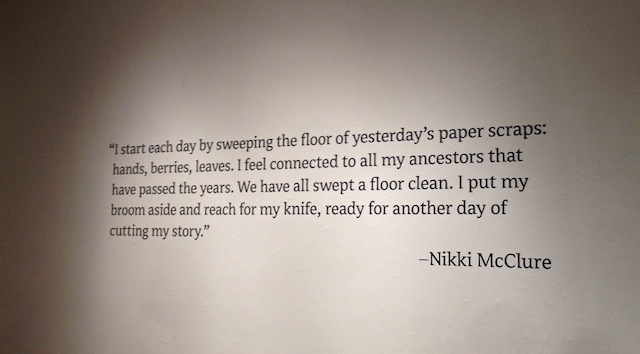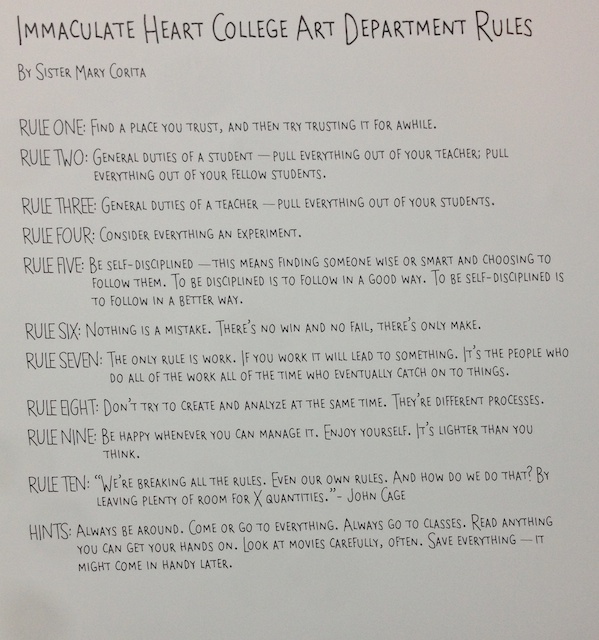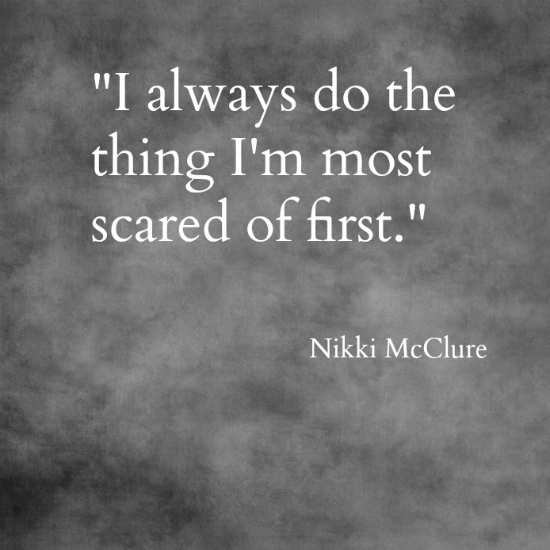Things I Learned From Nikki McClure
background texture credit: pareeerica via photopin cc
A couple of weeks ago I attended a gallery walk at our tiny local museum with Nikki McClure. I’ve been an admirer of her paper-cut work for years and have a small collection of books she illustrated. My midwife’s office was decorated with several of McClure’s prints and I studied them at every appointment. I love how her work illustrates every-day scenes - mending, nursing a baby, picking berries, toes dangling in a stream. I love how her simple lines and use of limited color can tell such an emotional story.Her work is recognizable - I see an image in the pages of a magazine, hanging on a wall, or on the cover of a book, and I know it is her. As an artist I have set her on a pedestal labeled “successful.” In other words, not like me. I’m a dabbler artist, not a successful one. My paintings are not in books with hard covers. I've never had a museum ask to show my work.But I didn’t really know much about her. What I learned by visiting the exhibit and listening to her talk is that she is actually more like me than not. She is close to my age, shares a lot of my values, and is also a mother. I don’t know why this surprised me, because I know a lot of artists, but she just seemed so, well, normal. She seemed like someone I might run into at a backyard gathering in my own town, or at a music festival, where her boy might be playing with my daughter along the side of the blanket and lawn chair seating during intermission. She seemed like someone I’d find myself swapping recipes and fermentation tips with.It was great to hear her talk about her creative path - where she began, where she has wandered, and where she is now. To hear about her motivations, struggles, and practice. But mostly I found myself inspired because she was so down to earth.
A quote from the wall of the Santa Cruz Museum of Art and History exhibit.
She talked about how she makes art because she has to. Not to sell, but because cutting paper is her way of communicating, one of the ways she processes her experiences. She talked about how she believes in connectedness - how we each are connected to the world around us and how our actions make an impact on that world and on each other. But in how she represents that in her art, she works with what’s only within 30 feet of her. And in that distance there is so much.She talked about addressing fear, having courage in creation. She said, “I always do the thing I’m most scared of first.” She was talking about cutting paper, but that sentence could be a life-wide motto.She talked about passion, and living a life you believe in. She said, “Your passion should be lived, and you should never wait to live that.” She talked about mending clothes, making music with her friends, listening to her son’s stories, gathering berries and making jam.When someone asked her what kind of paper she uses, what kind of blade? How does she make the thing, exactly? she said “It isn’t the blade and the paper. It is making the thing you really want to make.”Maybe I’ve been thinking about my art all wrong. Maybe it isn’t what I put on paper so I can hang it on the wall, but the whole life I live around the paper and the wall. I love that life. The beauty of it makes me ache sometimes. So maybe I’m a successful artist after all. This poster was hanging on the wall outside the gallery. Sister Mary Corita was an artist and art teacher and McClure is an admirer of her work. These rules, which Sister Mary wrote for her art department, seem like wonderful rules for art and for life both.What experiences have you had that made you re-think how you defined yourself or your life?
This poster was hanging on the wall outside the gallery. Sister Mary Corita was an artist and art teacher and McClure is an admirer of her work. These rules, which Sister Mary wrote for her art department, seem like wonderful rules for art and for life both.What experiences have you had that made you re-think how you defined yourself or your life?

